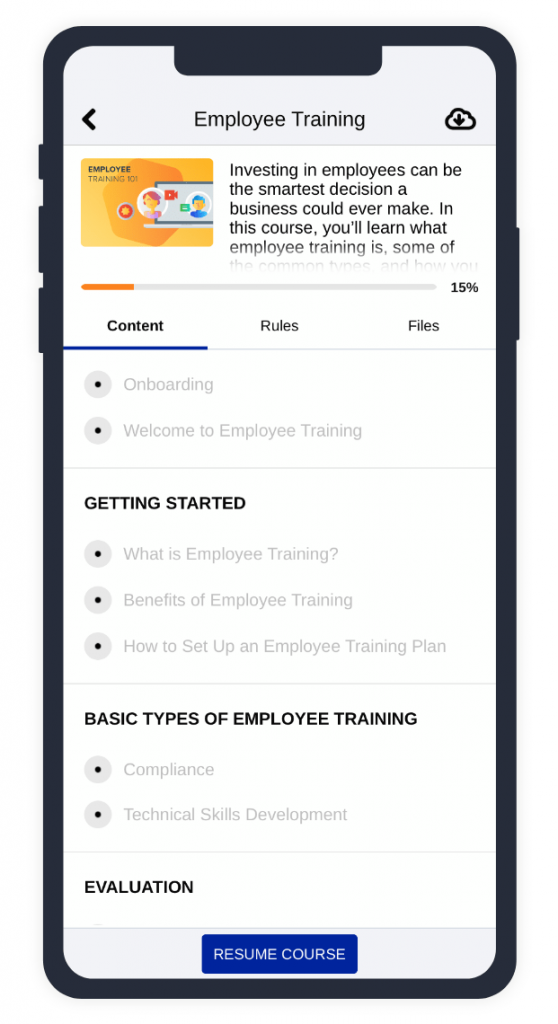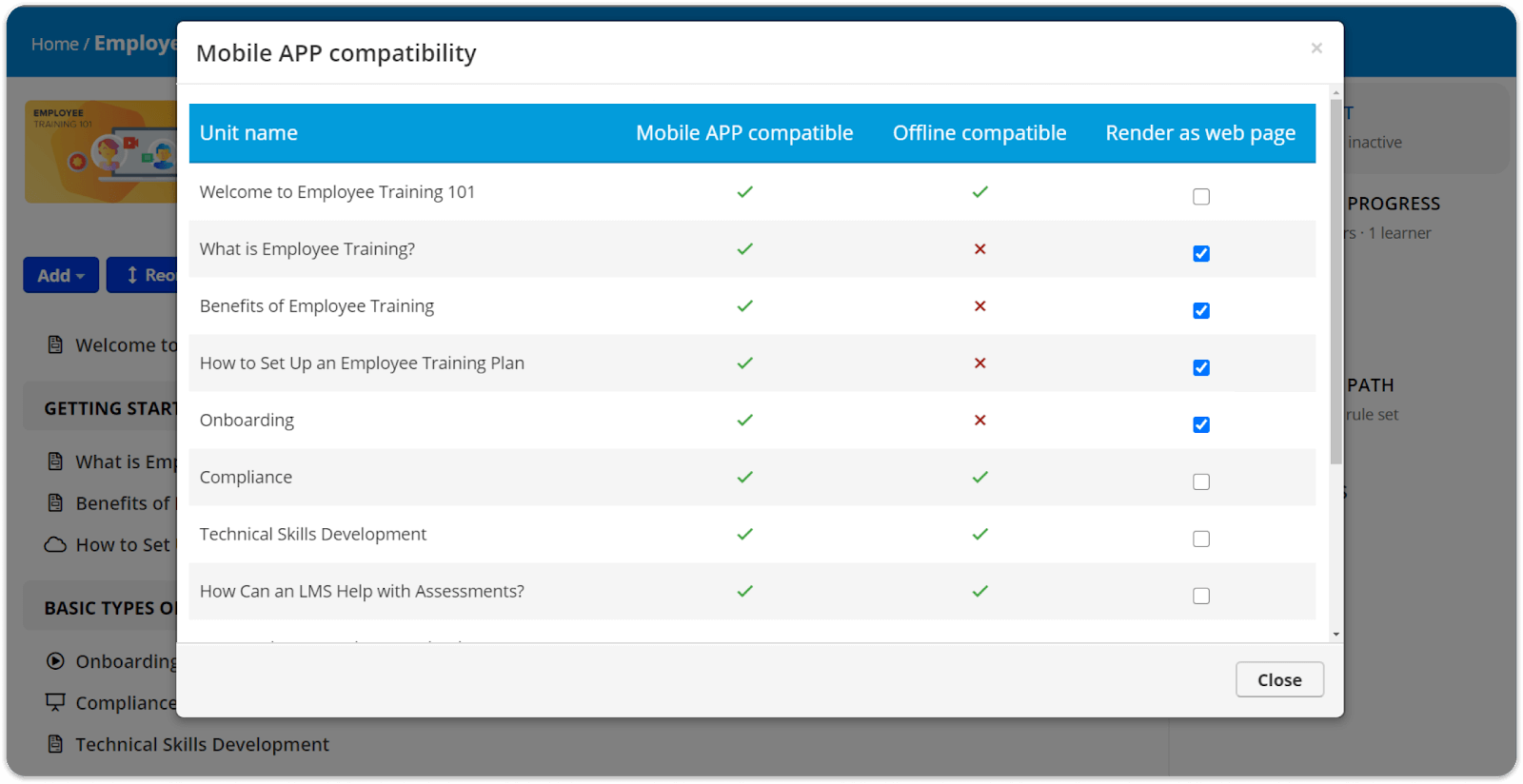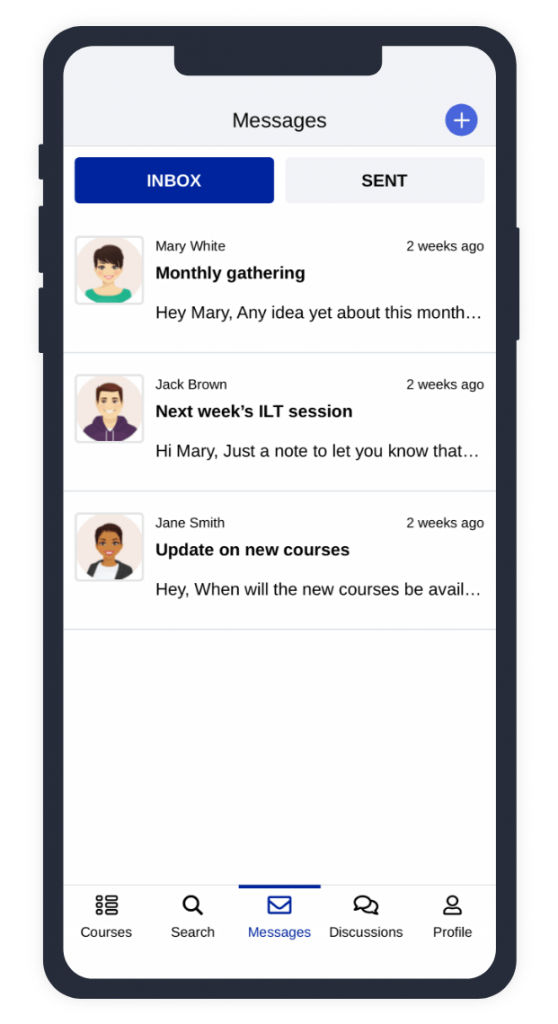Mobile learning’s on the rise. The facts speak for themselves. Supercharged by the COVID-19 pandemic, research indicates that the global mobile learning industry will hit $80.1 billion by 2027. That’s almost four times the $22.4 valuation back in 2020.
The popularity of mobile learning’s clearly no myth. But there are still plenty of myths that surround the mobile learning narrative as a whole. Upholders of the truth (particularly when it comes to eLearning), we put our myth-busting cap on to set the record straight.
Myth #1: Mobile learning is just for kids
“Who wants to do “serious” learning on a smartphone?”
Busted: Most Fortune 500 companies have already moved towards mobile learning, or are in the process of doing so.
Mobile learning supports “serious” corporate training in two mutually supportive ways. It lends itself to microlearning. Which means employees can study small learning units or engage in short-term learning activities and fit these around their day-to-day jobs.
And, it’s ideal for learning on the go (for example, during a commute, on the way to a meeting or a conference, or in between appointments).
Myth #2: You can’t learn on a small screen
“I’ve included so much information in each course, it will be impossible for my employees to take it all in using a phone.”
Busted: First of all, have you checked smartphones lately? Information density, especially on flagship models with “retina” (HiDPI) displays, puts most office monitors to shame. And screen sizes are only getting bigger. Which means, you can pack a lot of material into a single, small screen.
You can. But you probably shouldn’t.
Whether it’s eLearning or mLearning, a compelling course isn’t defined by how much information you cram in. Success lies in how well that information is absorbed by your learners. Design eLearning content around the basis that less is more and mLearning success will follow.
And don’t forget that user experience (UX) matters, too. Particularly with mobile learning. Look for an LMS with a mobile learning app that has a minimal and distraction-free UX design. This way, your content will stand out, even on a small screen.

Train your teams from anywhere, at any time
Download the TalentLMS mobile app,
and start delivering training even on the go.
Myth #3: Mobile learning ties training exclusively to a phone or tablet
“If my employees start using their mobile phone for some of their training, they’ll have to use it for all of their training.”
Busted: How your employees access their training isn’t an inherent limitation of mobile learning. It’s an inherent limitation of the platform you’re using to provide that training.
It’s just as easy to combine web-based online learning with mobile learning as it is to combine instructor-led training with self-paced learning. As long as you’re using the right platform.
Some mobile learning platforms are designed to work exclusively on mobile devices. But many combine mobile learning with web-based learning on a laptop or desktop computer, syncing progress to central (cloud-based) servers.
This means your employees can use their mobiles or tablets to train on the go, but carry on with the same course using a different device when they’re back in their office.
Myth #4: Mobile learning only works if you’ve got reliable, fast, and cheap connectivity
“How can I guarantee a positive and seamless learning experience, if I can’t guarantee the mobile technology that supports it?”
Busted: True, mobile learning’s better with high bandwidth and a strong, steady network connection. But you can still provide an engaging mobile learning experience whether or not you have an excellent connection.
How? Again, here’s where your choice of learning platform makes a difference. Find one that gives your employees the option to download courses onto their mobile devices so they can study them whether they’re online or offline.
Tip: A well-designed mobile LMS will even warn you if some features used in your lesson units aren’t compatible with offline learning (embedded video links pointing to YouTube, for example).
Myth #5: Custom mobile learning is complex to set up
“I’ll have to duplicate everything I’ve created and spend time reconfiguring content to adapt my course for mobile devices.”
Busted: You shouldn’t have to do anything extra if you’re using a well-designed, user-friendly mobile learning LMS. mLearning should be just as easy to set up as your regular web-based training.
With TalentLMS, for example, you just deploy your content as you always did and our cloud servers will take care of all the rest—no special infrastructure needed.
That said, there are a few factors that distinguish mobile learning from its laptop-based counterpart. And some small tweaks you can make to your content and design to accommodate them. To find out what these are, see if you can use your LMS to run a mobile compatibility check.

Or, if you’re at the start of your design process, why not encourage content developers to follow a platform-neutral approach from the outset? By being mindful of what works for mobile-friendly courses, they can work this into the general design. And develop eLearning programs that work well on all kinds of platforms and devices.
Myth #6: Mobile learning is only for a mobile workforce
“Most of my employees work either in the office or remotely from home. If they’re not ‘out on the road’ they won’t be able to benefit.”
Busted: Mobile learning refers to the device used to access eLearning content, rather than the circumstances surrounding the learning.
And many employees, even those who are home or office-based and could use their desktop or laptop for all their eLearning, choose to mix it up sometimes.
Why? Mobile learning gives them the flexibility to step away from their “work screen” and move to a different space (a break-out room, sofa, cafe, or even a park bench) to do their training. This physical change of scene also encourages employees to move away from a “work” mindset and into a “learning” mindset.
Tip: TalentLMS comes with a native mobile app for iOS and Android giving learners the flexibility to choose what works for them.
Myth #7: There are too many distractions on mobile devices
“How can my employees concentrate if they’re not in their office or at their desk at home?”
Busted: Unless your employees work in a vacuum, there’ll be distractions wherever they choose to do their learning.
You can never guarantee a distraction-free zone. The answer is to make the content of your course as engaging as possible.
Tip: Here are a few ideas on how to create an interactive trainign program people will love—no matter which device they’re using.
Myth #8: Mobile learning means microlearning and nothing else
“There’s no way I’ll be able to use an exciting mix of content types or delivery methods on a phone.”
Busted: As we mentioned earlier, microlearning’s bite-size training strategy lends itself to mobile learning. But it’s by no means the only option available to course designers.
With an mLearning app, you can use a range of other approaches, including multimedia content, gamification, instructor-led training, and more to boost learner engagement.
Myth #9: Mobile learning is expensive
“I’m going to end up paying more to use an additional app or develop my own.”
Busted: If you’re using a good LMS, a native mobile app will be included as part of your package. In fact, rather than adding to your costs, mobile learning can actually be cost-effective. Hardware prices are lower because your employees can use their own devices or devices you’ve provided that cost less than traditional platforms.
You’ll also reduce potential costs associated with in-person training. If most of your employees work in the field rather than in an office, they may not have a desktop or laptop. Without mobile learning, the only option is to organize live training sessions and pay all the travel, accommodation, facilitator, and refreshments expenses that follow.
Myth #10: Mobile learning may offer something to my employees but it doesn’t offer anything to me
“I’m never going to use my phone to create a new course or carry out any of my admin tasks.”
Busted: If you’re an L&D admin, your phone may not be where you’d instinctively go to carry out some of the weightier work associated with your role. But there are lots of day-to-day admin tasks your mobile device is perfectly suited for.
Use your mobile LMS to check user achievements, progress, and activity. Access general course status data, or send reminders and messages on the spot, wherever you are. Having access to your LMS from your mobile, and being able to carry out simple tasks, could be a great time-saver, especially during busy times.

Myth #11: Mobile learning isn’t secure
“Data security and privacy are super important to us. Aren’t mobile phones more vulnerable to cyber-attacks and theft?”
Busted: Any device that’s used outside a formal workplace is more at risk of being lost or stolen. And that applies to laptops as well as phones and tablets. But, even if the device does fall into unwelcome hands, there’s a lot you can do to stop the data from following suit.
From downloadable security apps and malware protection to built-in features such as password protection, biometrics, and encryption there are lots of ways to safeguard a device. And its data. Basic cybersecurity training will also go a long way to providing protection.
But the safest and most sensible solution is to keep all of your learning in the cloud.
Myth #12: Mobile learning is inaccessible
“Small screen sizes, the potential for physical disturbances, peripheral noise, and phone-generated notifications are going to prove stressful for people with some sensory or learning disabilities.”
Busted: Not all people learn the same way. And inclusive training isn’t inclusive if people can’t access content from different devices.
If your LMS supports mobile learning, your employees have got more choices. They may feel more comfortable training from the same desktop device they use to work from. Or, they may prefer a different method.
As long as you’ve built your training with accessibility in mind, it shouldn’t matter how your users access it. Which is good for accessibility. And good for you.

From 12 myths busted to one truth universally acknowledged
12 myths. 12 myths busted. There are, no doubt, a few more myths out there that we haven’t ticked off here. But a dozen is a strong start. And the fact that we’ve been able to bust each one, says a lot about truth versus perception when it comes to mLearning.
But why does it matter what we think? It matters because behind those outdated myths, lies one universally acknowledged truth: mLearning’s the future.
The stats predict it. The tech’s on course to deliver it. And an increasingly mobile mindset will power it. Mobile learning is, in the end, what you make of it. But the more you make of it the better. So don’t let a few old myths hold you back.
Originally published on: 08 Sep 2015 | Tags: eLearning Myths,Mobile Learning

![6 Advantages of Mobile Learning [for Employers and Employees]](https://images.www.talentlms.com/blog/wp-content/uploads/2018/01/Benefits-of-mobile-learning-for-employers-and-employees.png)

What a useful article! Really clear and insightful. I especially liked point no. 2, and the psychological difference between learning on a phone vs. sitting down “ceremonially” to study – I hadn’t thought of that. Thank you, Nikos.
Thanks for the kind words Liz, glad you enjoyed the post.
Indeed, I think that the environment under which learning happens can have a big effect in how a learner approaches the material (casually, with intent, forced, “ceremonially”, etc).
It might also be possible to influence a learner towards a casual or “cermonial” approach even within the same environment — depending on how we structure our material and set its tone.
Thanks for the insight, Mr. Andriotis.
It’s interesting but not surprising that
courses/content are being designed to be mobile friendly..
From an end user’s perspective, to be able to view courses on mobile is a very convenient option, especially on the go.
On the other hand, the functionality of a smartphone is touch-screen
based, in which case the same design principles may not apply as a
desktop version. Again as an end user, E.g. While participating in Webinar, I was able to
watch live streaming video as well as participate in chat with the
members of the group on Windows as a collaborative activity. However,
the same video while beautifully streaming on my iPhone, would not let
me simultaneously text/chat along-with. It was more of a ‘receptive’
learning.
Very well written article and I believe that mobile learning will be beneficial for your workforce if it consists of more number of millennials as they are well versed with mobile devices.